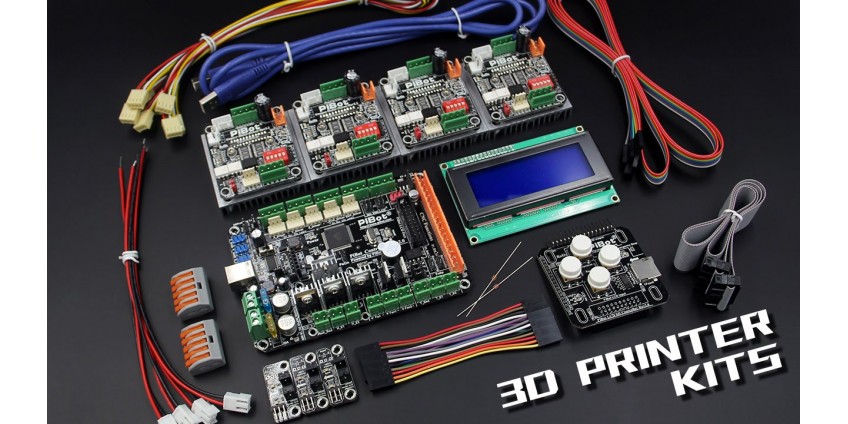3D Printing In The Electronics Sector: An Assessment
It only started about 30 years back and now, the 3D printing technology has already influenced some of the major industries of the world.
Talk of production, manufacturing, hospitality or corporate- you could find applications of this additive manufacturing technology in all of these.
And apart from all of these, 3D printing technology has influenced yet another industry and this is the electronics sector.
As per the reports, the revenue generated with the use of 3D printing technology in the electronics fields accounted $681 million in the year 2015. No wonder, the steady growth that has been reported is bound to multiply manifold, and is expected to touch a revenue of about $1 billion by the year 2025.
So what does it imply?
It simply means that the use of 3D printer kits in the electronics industry is in full swing and shows no signs of stopping, near or far.
But is it all that you wished to know? Let us discover some other key aspects of 3D printing and its major effects on the electronic field.
Additive Manufacturing Of Electronics:
3D printing technology has been reliant on various non-standard materials such as plastics, nylon, ceramics and metals etc. for the exterior façade of the products.
However, with electronics, the trend is bound to change. It generally requires materials which are effective to form the internal circuitry and that too without any hassles.
Thus, the focus now shifted towards printing materials which include conductive inks. For instance, use of toners laden with charged particles was used to build the circuitry and these offer a significant precision level too.
Typically, a common 3D printer kit, which fabricates 3D printed electronics, uses two kinds of material sources:
•The Base Material: This is used to construct the exteriors of the products
•The Conductive Material: This is used to formulate circuitry (which is generally the inside portion)
Thus, as you used your Prusa i3 kit to form innumerable domestic products, the commercial automated products have facilitated the formation of batteries, circuits, sensors, circuit boards, microelectromechanical systems, antennae and hoards of similar electronic parts.
The Kinds Of Technologies Involved:
The process by which the electronics are manufactured using 3D printing technology could be grouped in two ways:
•Electronics are built secluded from the part fabrication procedure
•Electronics are built within the part production process
And as expected, each of these approaches could always have its pros and cons and could be used for different applications, which relies on your objectives of fabrication.
The Major Materials Employed:
In addition to what has already been in use (the plastics, thermoplastics, resins, ceramics and metals etc.), the additive manufacturing of electronic components has employed some newer materials such as copper ink, conductive silver and other conductive materials.
Some of the latest electronic 3D printing equipment which are currently in use are:
•Graphene: Graphene is a type of graphite that has high thermal and electric conductivity. Plus, it is flexible, transparent and is highly suitable for manufacturing the integrated circuitry in electronics.
•Nanomaterials: These are the materials which contain particles of some conductive materials such as conductive copper or silver in nanoscale measurement. The inks are said to be highly conductive in nature and promise various applications.
3D Printing Benefits For The Electronics:
We saw how the use of 3D printing technology enabled printing hoards of electronic components.
But is it more advantageous than the original production methods?
Let us see the advantages of 3D printing in the electronic field:
•No Flat-Beds-Only Necessary: With the use of 3D printing, you do not need flat circuit boards for fabrication of products. And due to this, it invites newer opportunities to create the most innovative shapes and designs for products such as solar panels, electronic prosthetics, batteries and glucose testing strips etc.
•Bulk Customization: The technology facilitates a significant tractability for customization on the unit level. And this is applicable not only for mechanical components but for electromechanical and electronics as well.
•Reduction In Material Wastage: This is one of the universal advantages of 3D printing technology and it applies to the electronics sector too. You need to provide only the required amount of materials to formulate products and there is negligible scrap encountered.
•Reduction Of Product Size: With additive manufacturing, it is not required to produce external packaging for the extended portions. For instance, smartphone antennae could be positioned directly on the phone case, which helps in size-reduction of the device.
•No Harmful Chemicals Encountered: It required chemicals to eliminate extra material from the desired products when the traditional processing methods were used. This is known as ‘etching’. But with 3D printing, there is no need for such chemicals as the materials get laid down only when needed.
•Streamlined Operation: The 3D printing technology eliminates the traditional step-by-step production process which included lithography, film deposition, etching and packaging etc. processes. Instead, all these are incorporated as a single process in a single assembly. Thus, it has simplified the production process a great deal.
Thus, 3D printing technology has promised a lot of advantages over the traditional production methods and this is bound to bear results in the upcoming periods.
On The Bottomline:
The additive manufacturing technology has proved to be a worthy and more advantageous successor to the traditional printing methods.
You could have used an Alunar 3D printer for your domestic printing needs, but the trends have taken a major turnaround.
And similar to most of the industries, the electronics sector has also experienced immense advantages with the use of this technology. So, if you have a plan in mind to set up your own production industry for electronics, you could always follow the path to work in association with the 3D printing technology.
Image credits: PiBot

